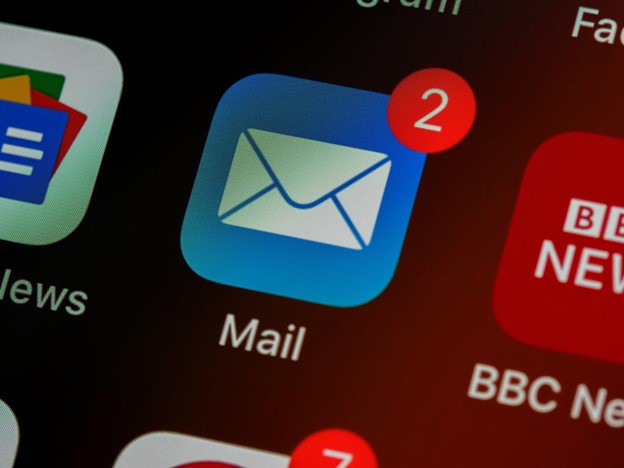
Combined with a solid inbound marketing strategy, cold outreach is a crucial part of any sales team’s strategy. It’s how businesses can reach potential customers, develop relationships, and convert leads into sales. However, it can be challenging to get it right.
Many sales teams struggle to find the right prospects, send effective messages, and follow up effectively — all of which can lead to a low response rate, wasted resources, and, ultimately, a negative impact on sales.
But by implementing best practices and leveraging the right tools, your sales team can streamline their efforts and achieve better results for your business.
6 Ways to Optimize Your Sales Team’s Cold Outreach Workflow
This article will explore six ways to optimize your sales team’s cold outreach workflow, from developing sales leads to setting up automated workflows and crafting compelling messages. Whether you’re a seasoned sales pro or new to the game, you’ll find tips and strategies that will help you take your cold outreach workflow to the next level.
1. Curate Your Sales Leads with Tools and Data
A well-curated sales lead list is the key to optimizing your cold outreach workflow. The right leads list can make all the difference in your sales efforts and help your sales team succeed in a shorter amount of time.
Here are some tips for creating a targeted and effective lead list that will streamline your sales team’s cold outreach:
- Identify your ideal customer profile: Before you start, make sure you understand the demographics, interests, pain points, and needs of your target audience.
- Use data-driven insights: Analyze your existing customer data to identify patterns and trends that can help identify potential leads. For example, your website and social media analytics can highlight those who engage with your content.
- Leverage social media: Social media platforms, such as LinkedIn and Twitter, can be valuable sources of leads for sales teams. Use the advanced search features and hashtags to identify potential leads based on their industry, job title, or interests.
- Attend industry events: Conferences and trade shows can be an effective way for your sales team to generate leads through networking with potential customers and collecting their contact information.
- Use lead generation tools: Some tools use advanced algorithms and data analysis to identify and verify potential leads based on specific criteria, such as job title or industry.
With a well-curated lead list, your sales team can focus on the most promising prospects. This precise curation will increase their chances of making a sale and, ultimately, growing your business.
2. Find and Verify Email Addresses using LinkedIn Profiles
Without a valid email address, following up, getting responses, and building relationships are much harder. Aside from using a lead generation tool, as mentioned above, another effective way to find email addresses for your leads is by using LinkedIn as your search engine.
Use the LinkedIn search bar to look up the contact’s profile and navigate to the “Contact Info” area to see if they have made their email address visible. If there’s no email address listed, try using email-finding tools like Skrapp or Datanyze to simplify and speed up finding email addresses.
With LinkedIn’s vast pool of data, you can leverage information from various sources, such as posts and company websites, in one place, saving your sales team valuable time and effort.
3. Craft Effective and Customizable Outreach Messages
Messaging plays a crucial role in cold outreach. It’s the first impression a potential customer will have of your brand, and it can make or break the success of your cold outreach efforts.
A well-crafted message should be concise, engaging, and easy to personalize for optimum results. It should capture the recipient’s attention and communicate the value your product or service can offer.
Here are some tips for creating effective cold outreach messages:
- Use an attention-grabbing subject line: The subject line is the first thing the lead will see, so make sure it’s appealing and relevant to their needs.
- Personalize your message: Use the lead’s name and any relevant information you’ve gathered to tailor the message where appropriate.
- Keep it short and sweet: Avoid lengthy emails that may overwhelm the reader. Keep your message concise, clear, and to the point.
- Use a conversational tone: Limit jargon or overly formal language. Instead, use a friendly and approachable tone to help you establish a connection with your lead.
- Highlight benefits: Focus on the benefits of your product or service rather than just its features by explaining how it can solve their problem or meet their needs.
- Include a clear call-to-action: Make it easy for the lead to respond by including a clear call-to-action, such as scheduling a call or setting up a demo.
- Avoid using spam trigger words: Words like “free,” “discount,” or “limited-time offer” can trigger spam filters and cause your sales messages to be flagged.
- Use social proof: Include customer testimonials, case studies, or industry awards to showcase your company’s credibility and build trust with the lead.
When you focus on crafting effective messages that resonate with potential customers, you can increase your sales conversions and generate more revenue for your business.
4. Set Up Automated Workflows
Streamline your cold outreach with the right tools and technologies. Email marketing software, CRM systems, social media automation tools, and more can save your sales team time and effort while automating outreach, tracking progress, and analyzing success rates.
For example, using an email automation tool can help you send targeted outreach emails to specific audiences, all while adding personalization in the right places and tracking the performance of your campaigns.
With so many options available, it can be overwhelming to determine the right tools that will best suit your needs. However, taking the time to research and evaluate different tools can save you time and money in the long run.
5. Analyze and Track Successful Outreach Strategies
To improve your cold outreach workflow, analyzing and tracking key metrics will show your team what’s successful in your outreach strategies. This way, you can make data-driven decisions to enhance your strategy.
You should consider different metrics depending on your specific goals and objectives, but some common ones include the following:
- Email open rates
- Click-through rates
- Customer acquisition cost
- Customer lifetime value
- Conversion rates
Continuously optimizing your outreach workflow will bring your team better results over time.
6. Keep Learning and Growing
As a sales team, it’s important to keep your audience in mind to stay ahead of the competition. This edge requires staying informed on the latest trends and technologies your audience is using, experimenting with new strategies, and constantly analyzing your results to ensure you’re meeting their needs.
Here’s how you can keep your cold outreach workflow up-to-date:
- Attend industry events and conferences: These events provide opportunities to network with other professionals, learn from experts, and gain insights into emerging trends.
- Follow industry leaders on social media: Thought leadership via platforms such as LinkedIn and Twitter can provide valuable insights into your industry’s latest trends and technologies.
- Read industry publications: Industry publications such as blogs, newsletters, and magazines often feature articles written by experts in the field, sharing practical knowledge about emerging trends.
- Join online communities: These communities often share news, insights, and best practices related to cold outreach workflows.
Key Takeaways
Optimizing your sales team’s cold outreach workflow is essential for increasing conversion rates and building stronger relationships with potential clients. By implementing the six strategies outlined in this article, you can enhance your team’s lead-generation efforts, email outreach results, and overall workflow effectiveness.
Remember, the key to success is to continually track and analyze your results to identify areas for improvement and adjust your approach accordingly. This technique can help your sales team show your company’s thorough comprehension of the industry and strong dedication to providing value to customers.
With a well-optimized workflow, you can take your cold outreach efforts to the next level, ultimately leading to more business opportunities for your company in the long run.





